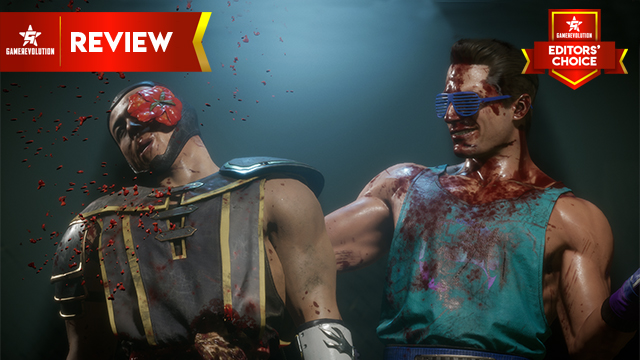NetherRealm has allowed players to slice, dice, and maim countless ninja, evil emperors, and lizard people over the last three decades, but few have been as merciless as the studio itself. Time after time, the developer hits the reset button and throws out and overhauls a ton of mechanics in a bid to keep the series from stagnating. MORTAL KOMBAT 11 is the latest victim, as most of Mortal Kombat X’s fast-paced rushdown systems have been ripped out like a freshly severed spine. And while this scorched-earth approach may seem counterproductive, Mortal Kombat 11 is an inventive interpretation of the franchise’s core that successfully prioritizes tactical play without sacrificing its gore and combo-based foundation.
Mortal Kombat 11 achieves this by axing the run button and stamina meter. Since you can’t instantly sprint into your opponent’s grill to lay on endless pressure, you need to use footsies and poking to get in while also possibly contending with light zoning along the way. This automatically slows down the general pacing of the fights since this cadence encourages you to think a little bit more about what you do before you do it. Moves are generally pretty safe on block too, which means you need to use these tools to open your opponents up.
The mental game of using throws, overhead, low, high, and mid attacks is even more pronounced because of this pacing since you’ll have to make the right guesses once you do get in. Combo strings are also a bit shorter for the most part, meaning that guessing wrong doesn’t always lead to a 35% loss in health for one wrong read. There are also plenty of low and overhead attacks that are just meant to punish your opponent and not lead into lengthy juggles.
But that doesn’t mean there are no juggles and that the game runs at a snail’s pace. The slightly tempered down tempo has not turned this into Injustice 2. Instead, there’s a more balanced mix of juggling and light zoning, leading to a more even experience. Juggles can still come quickly and net decent damage too but the more devastating ones are handled in a more interesting way too because of the brutal new Krushing Blow system.
Mortal Kombat 11 Review | Krushing on that special someone
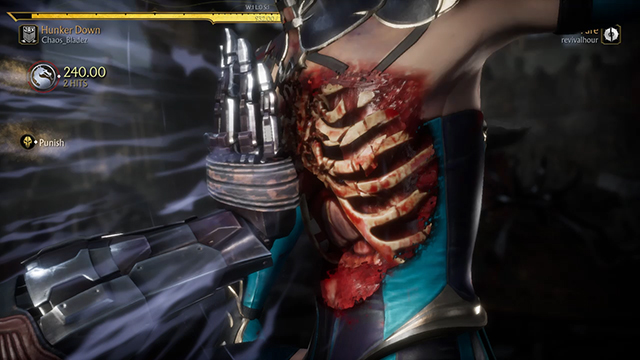
Krushing Blows only activate once per match under certain circumstances and have different properties from their normal counterparts. For example, Scorpion’s Spear has a Krushing Blow if you land it from full screen and amplify it, landing you more damage and additional time for a follow-up attack. Knowing when you can land these moves for optimal damage adds another layer of offensive strategy but you also need to be aware of when the enemy is on the cusp of a potentially fatal Krushing Blow. It’s yet another step the game takes toward tactical fighting while also not forgetting the combo-driven nature and flashy gore that has been with the series since the original trilogy.
And while the meter has not been around that long, it still has gone under some changes that further change how the core game is played. Instead of one big, chunky bar that controls everything, it has been split into an offensive and defensive bar that passively fill up. Amplifying moves drains the offensive bar, getup rolls and combo breaker-like breakaways drain the defensive bar, and invulnerable wakeup attacks and vulnerable wakeup juggles drain a one bar of both. Fatal Blows, which function like super moves, are also relegated to fighters with less than 30% health, meaning you don’t have to choose between your meter and your most devastating attack.
There are more options to choose between and you’ll be more incentivized to use them since they’ve been divided up. Combat has more variety as a result since using a breakaway doesn’t drain your ability to amplify moves or execute a Fatal Blow. All of these unique changes seem odd on paper but end up working with and enhancing the game’s more methodical pace. And while Fatal Blows are currently a tad too easy to nonchalantly throw out, difficult to punish on block, and don’t scale in combos as severely as they should, they add a whole new level of tension to the final seconds that old X-Ray attacks rarely did.
Mortal Kombat 11 Review | Kombat Klass
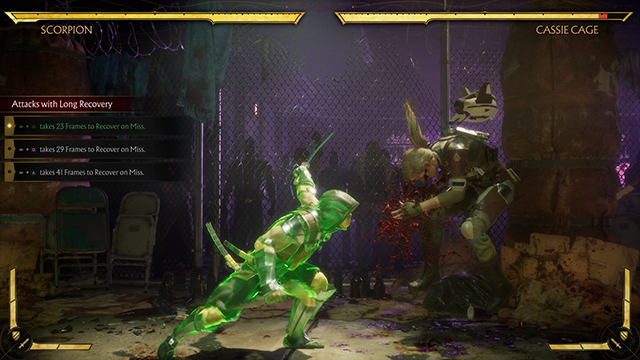
Perfect Blocks are also new and reward fast defensive timing with the opportunity recover faster and punish your opponent. And even though most people won’t be able to take advantage of this high-skill tactic, the game makes an incredible effort to get players to that level. Mortal Kombat 11’s training mode is second to none, offering detailed explanations of each character and mechanic in this game as well as fighting games as a whole.
It breaks down genre lingo and carefully explains what they mean and shows how they relate to actual fights in real-time using helpful timers and colors to get the point across without drowning the player in jargon. The specific character ones are also incredibly intuitive since they go through the best moves and tell you why they work and good situations to use them in.
All of these are divided into their own sections, meaning players can bite off bits as they see fit and move to more advanced lessons as they improve. Every fighting game would be better if developers put in this level of effort to address the genre’s barrier to entry and NetherRealm’s training modes should be training other studios how to do it properly.
Mortal Kombat 11 Review | Towering above the challenges

These training modes are good primers for those who want to jump into the game’s Towers of Time and online modes. Much like Injustice 2, these towers shuffle in at different intervals, giving players cosmetics or consumables for completing them. There are a ton of them too, which means there is always something new to play and set your sights on especially for those that are too afraid to jump online.
Each has some sort of unique gameplay catch and can be silly to go through but they can be so unfairly stacked against the player. Some towers have absurd difficulty spikes and bend the game far past its breaking point. One-time consumable buffs are meant to counteract these effects and they usually can for some of the lower towers, but are nearly useless in the ones that need it the most. NetherRealm has said that it is tuning these towers to be more fair, which will hopefully solve how brutal and demoralizing these towers can be at their worst.
Online play is far more smooth. It has the typical run of modes from King of the Hill, unranked matches, and ranked sets, but for what its online modes lack in originality, it makes up for in how smooth it all is. Lag spikes can still happen because not everyone has perfect internet, but most matches are incredibly responsive and almost nearly emulate local play. It’s an impressive feat and even though ranked sets can go on for too long and you can’t automatically mute opponents, MK11 has the framework to live online for quite some time.
Mortal Kombat 11 Review | Story time
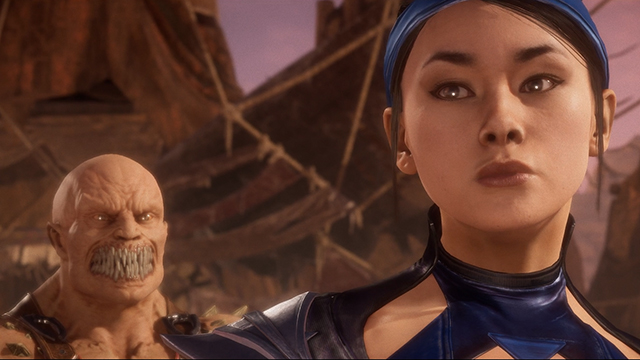
And while the studio has some noteworthy online chops, NetherRealm has also led the pack in offline fighting game story modes, which Mortal Kombat 11 also does better than any other series. Raiden’s lust for peace through light tyranny after disabling Shinnok tipped the scales too far in the good team’s favor, leading newcomer Kronika, the timekeeper, to barge in and restore the equilibrium. It’s a noble plan on paper but means stacking the deck against the good guys to achieve balance, something Liu Kang and the gang won’t take sitting down.
Mortal Kombat 11 tells its tale with precision, wasting no time to get to it while also not sacrificing quieter moments. The seamless transitions from fighting to cutscenes and vice versa are still unmatched and ensure that the pacing never lets up. But it also efficiently makes room for more intimate moments where these classic characters have time to bond and reveal their inner selves.
Despite the outward appearance of an operatic, comic book story full of earned twists and turns, Mortal Kombat 11 gracefully delves into themes such as trauma, loss, redemption, maturing, and more, which is aided by the nostalgia that helps fuel Mortal Kombat. The nostalgia surrounding classic Scorpion or Jax is an easy way to get viewers easily invested up front since nostalgia is good for grabbing attention, but NetherRealm utilizes that initial draw to its advantage by taking those characters and giving them a bit more depth.
Retro characters get a second chance to have more complicated arcs and contrast nicely with their older selves almost to the point where it seems NetherRealm is also coming to terms with and delightfully making light of its fun but shallow past. Although nostalgia can easily be bastardized for easy thrills and throwback costumes, the story goes beyond that and uses those nice old school feels to its advantage to tell a tale with a satisfying amount of drama, humor, and action.
The story and characters within it are carried by the incredible performances, animation, and cinematography. Mortal Kombat 11 is shot incredibly well, as the constantly moving camera captures emotional close-ups and normal dialogue as well as the tightly choreographed fight scenes, where takes can be long and zoomed out enough to appropriately capture the action. There’s no wobbly shaky cam here to mask anything, which makes it easy to accept the fact that you have to occasionally watch a fight before taking part in one.
Gorgeous facial animation works in tandem with the performances, as it is able to accurately show the acting that happens outside of dialogue. Emotional performances are more fully realized because of this incredible technology and helps the story more effectively tell its deeper tale.
Aside from the animation, none of this carries over to Sonya Blade because Ronda Rousey’s lousy performance. While it is good for someone to try to overcome their speech disorder, it doesn’t excuse the end result: she has the charisma of a chunk of drywall and reads her lines as if she were auditioning for The Room while under light anesthesia. She sticks out and drags down an otherwise talented cast and comes off as a desperate attempt to use star power to buoy an already popular video game franchise.
Mortal Kombat 11 Review | A load of loadouts
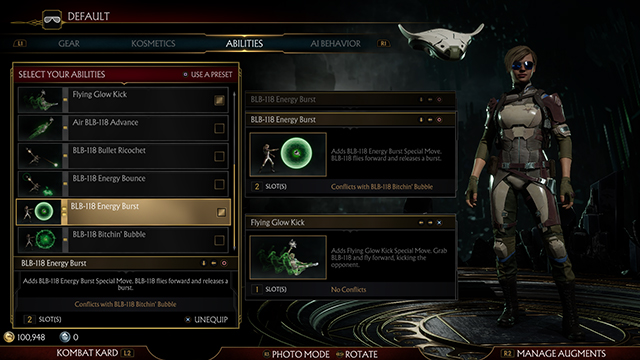
Thankfully, she has nothing to do with the game’s deep unlock and customization system. Characters have three customization categories each (mask, sword, and spear for example) along with a ton of skins. It’s more streamlined than Injustice 2’s gear system since the inventory is less cluttered. Even though the gem slotting system is needlessly complex and too narrow, the gear itself thankfully separates stats from the equation, meaning you can make your character look however you want without fearing how they’ll play. There are plenty of options and creating your own fighter is liberating and lets players give a personal touch to each combatant.
This even extends to the variation system that MK11 borrows from MKX, but players are now given the freedom to add their own moves as they see fit. The plethora of moves allows for a whole bevy of different possibilities and while the choice is solid for single-player towers and casual play, it doesn’t hold up quite as well in competitive matches. Ranked and tournament setups forgo that system in favor of two preset variations that NetherRealm deems balanced.
Two is incredibly limiting and mostly ignores what makes the system so innovative. Many useful moves are left out and there is usually one less than ideal variation within the duo. It’s an area where more options sounds nice but where three distinct, preset variations is a better, universally useful option. NetherRealm said it was going to patch in more variations in the future, which could meaningfully address the system’s issues, but given how the moves are slotted, it’s likely some will still be left out.
Mortal Kombat 11 Review | The stingy Kryptkeeper
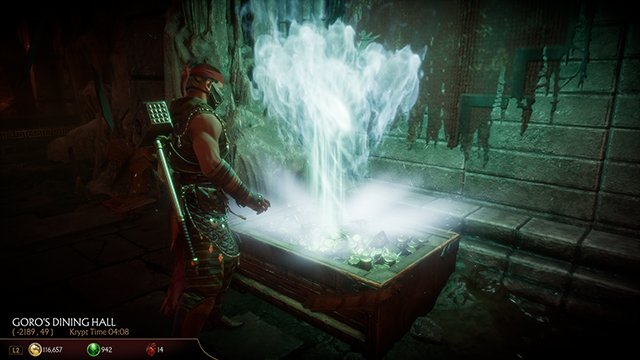
Unlocking costumes is similarly a great idea with some slight flaws. Going through the Krypt is a complete tonal shift from the main game since it is a third-person adventure game that tasks you with running around Shang Tsung’s island to solve puzzles and unlock crates. Figuring out what to do is in line with Mortal Kombat’s trademark secretive nature and doing so within such a sacred, recognizable place is a creative framing method for an unlock system, despite the infrequent yet annoying death traps and need for an online connection. There are a ton of different chests to unlock and find, which ties into the game’s replayability and always gives players something to work toward.
But there is quite a grind needed to unlock everything, which may frustrate players who want all the brutalities and skins. Chests are in different places for everyone and are spread across three different currencies, meaning you may spend forever trying to find what you want. The randomness isn’t as problematic as the grind for cash and how it mostly requires a constant online connection.
NetherRealm is currently in the process of boosting how quickly the game dispenses its three main currencies, which will hopefully minimize how steep the grindy hill is. If not, players will spending quite some time going through the Krypt and scraping to get by. It’s not even to push microtransactions either as almost nothing can be directly bought with real money; it’s a grind for the sake of it.
Most of the game is not a grind in the traditional sense, as its story, training, and multiplayer modes make Mortal Kombat 11 one of the strongest entries in the long-running series. It would have been a simple to want to make a more traditional sequel to Mortal Kombat X, but NetherRealm did something riskier by tearing out a fair chunk of core mechanics and replacing them with new ones. And it worked. Mortal Kombat 11’s toned down yet more tactical play gives it its own style that also remains true to the heart of the series. Although the franchise has been all about ripping out beating hearts, MK11 thankfully knew to leave that heart intact.
GameRevolution reviewed Mortal Kombat 11 on PS4 with a copy provided by the publisher.
-
Smooth mechanics that offer a slightly slower and more strategic pace.
-
Story mode moves well and nicely wraps up the trilogy.
-
Plenty of stuff to do and unlock.
-
Responsive online play.
-
Gorgeous, detailed visuals and superb facial animation.
-
Thorough training modes that carefully walk you through each character and mechanic.
-
Ronda Rousey.
-
Pre-set variations are limiting.
-
Unlock system can be expensive and is too dependent on a constant internet connection.
